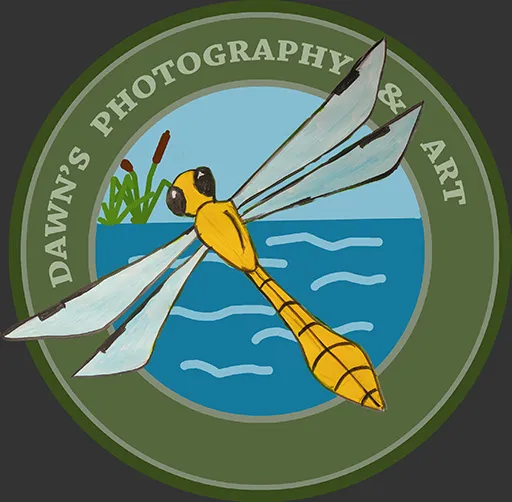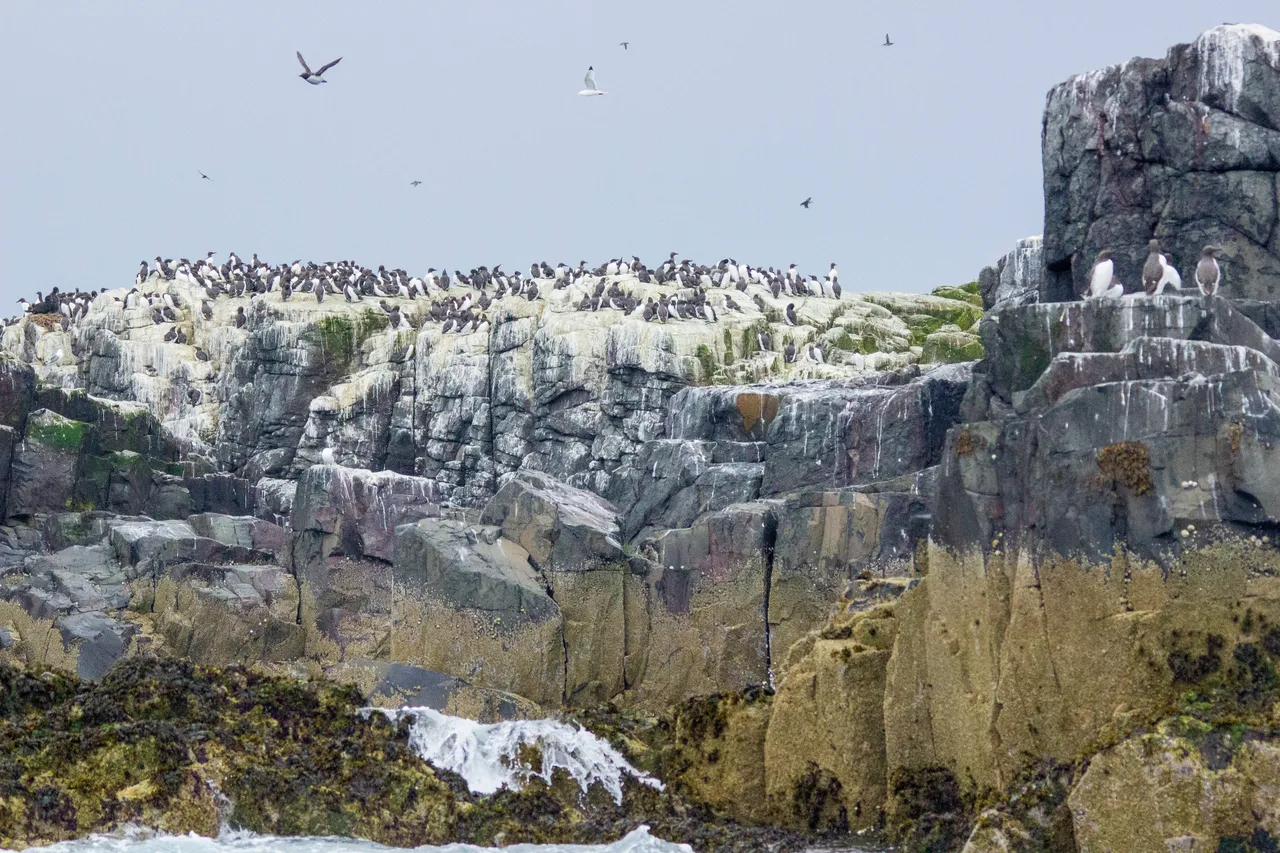
Cliffs are created by erosion of hard rock caused by the sea and wind. Some cliff slopes are maintained as grassland by the disturbance from seabirds, livestock or rabbit grazing that prevents the growth of scrub and larger vegetation.
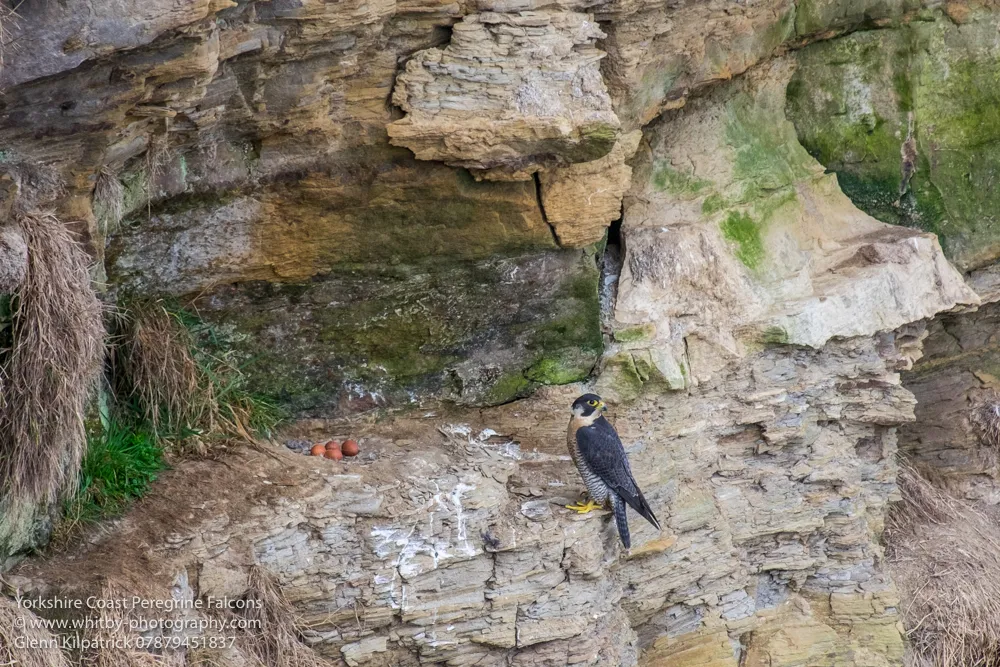
Above: Peregrine nesting on cliff on the Yorkshire Coast (Not my photo)
The hard rock provides and is important to many seabirds and raptors such as the Peregrine and White-tailed Eagle in Scotland but is more well known for it's cliff-breeding seabirds. In total some eight million seabirds nest around our coastline ever year.
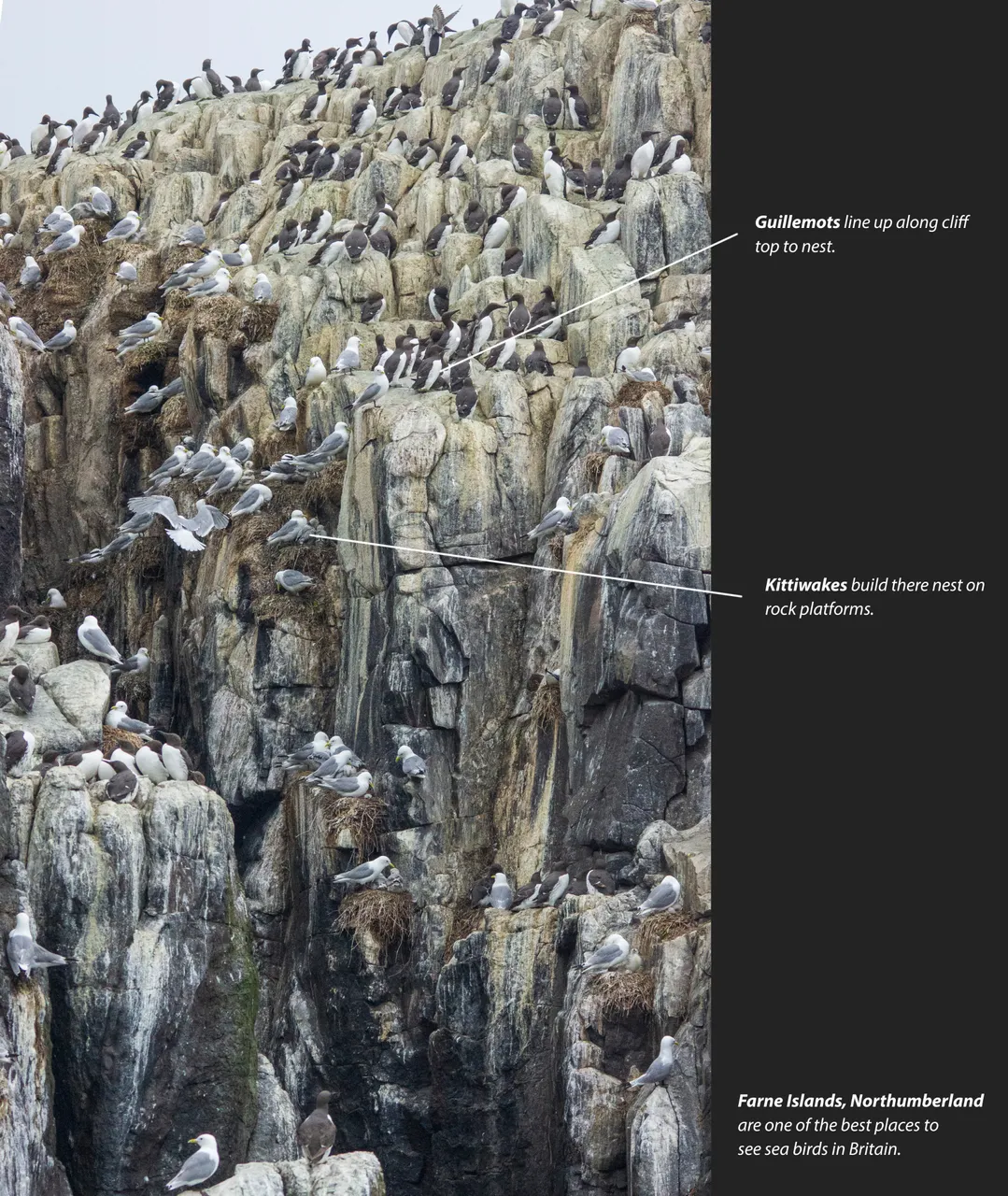

Above: Puffins nest in burrows on the cliff slope and can be seen with beaks full of Sand-eels.
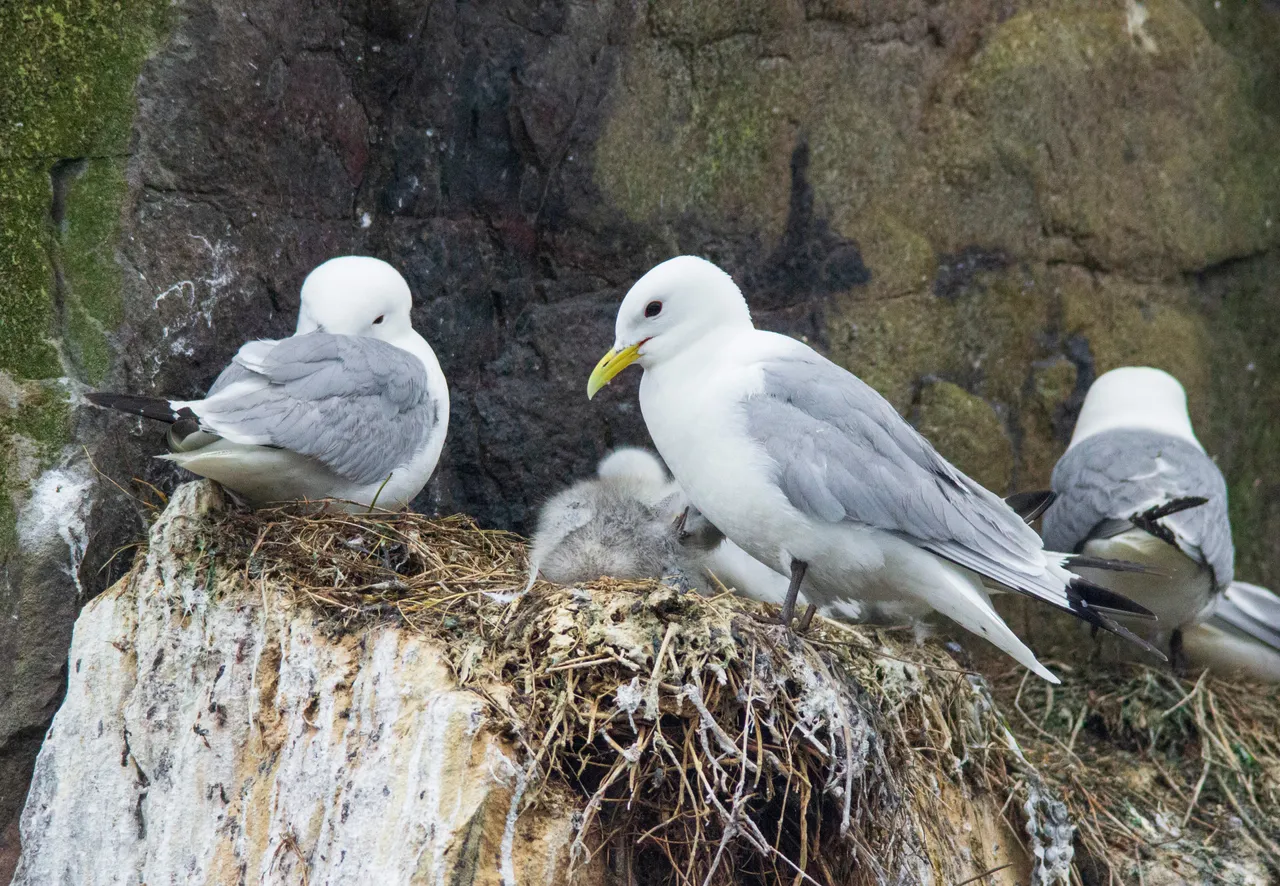
Above: Kittiwakes on there rock platform nest.
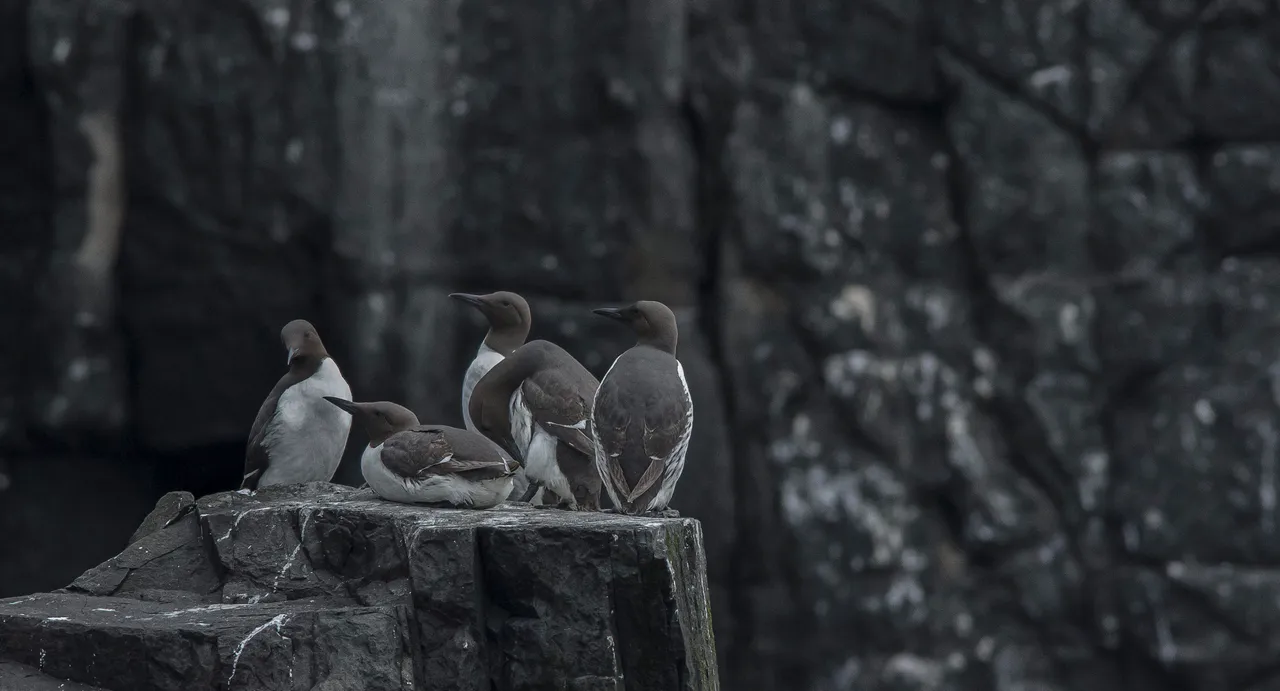
Above: *Guillemots and Razorbills below often nest next to each other.

Hard cliff of the west and the South also support some specialist invertebrates such as the Thrift Clearwing below.(Not my Photo)
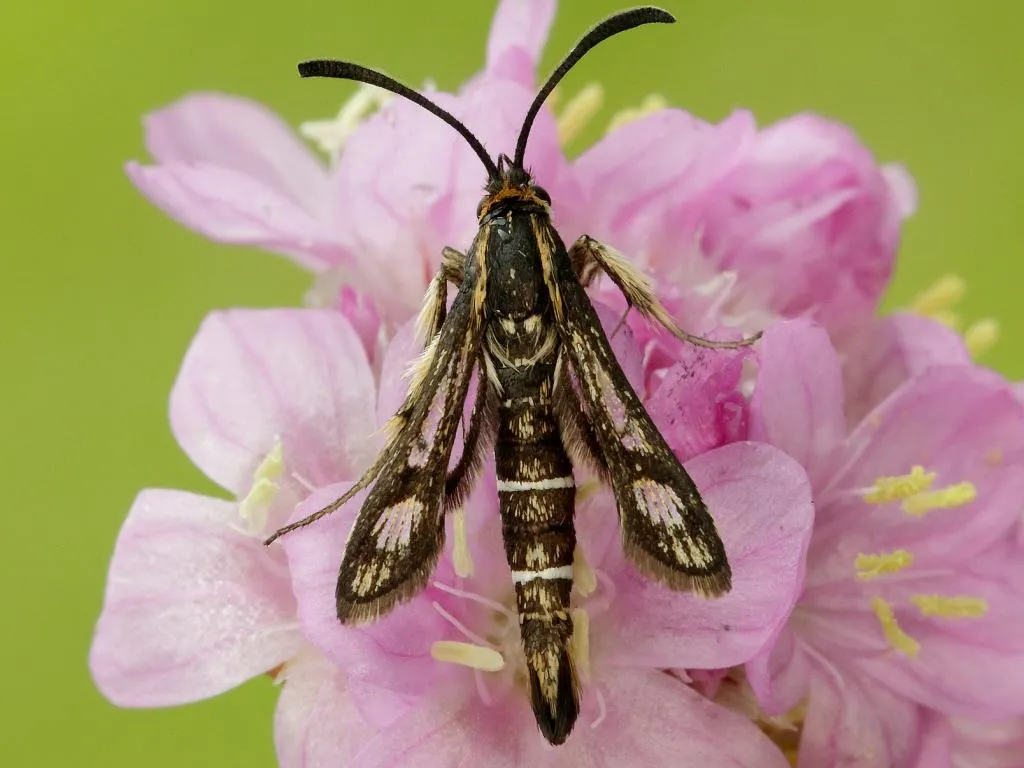
There is a selection of plants that are also found on hard cliff such as Sea Aster, Rock Samphire, Rock Sea-spurrey, chives and beautiful Thrift.

Above: Hard Cliff around Skomer Island, Northumberland
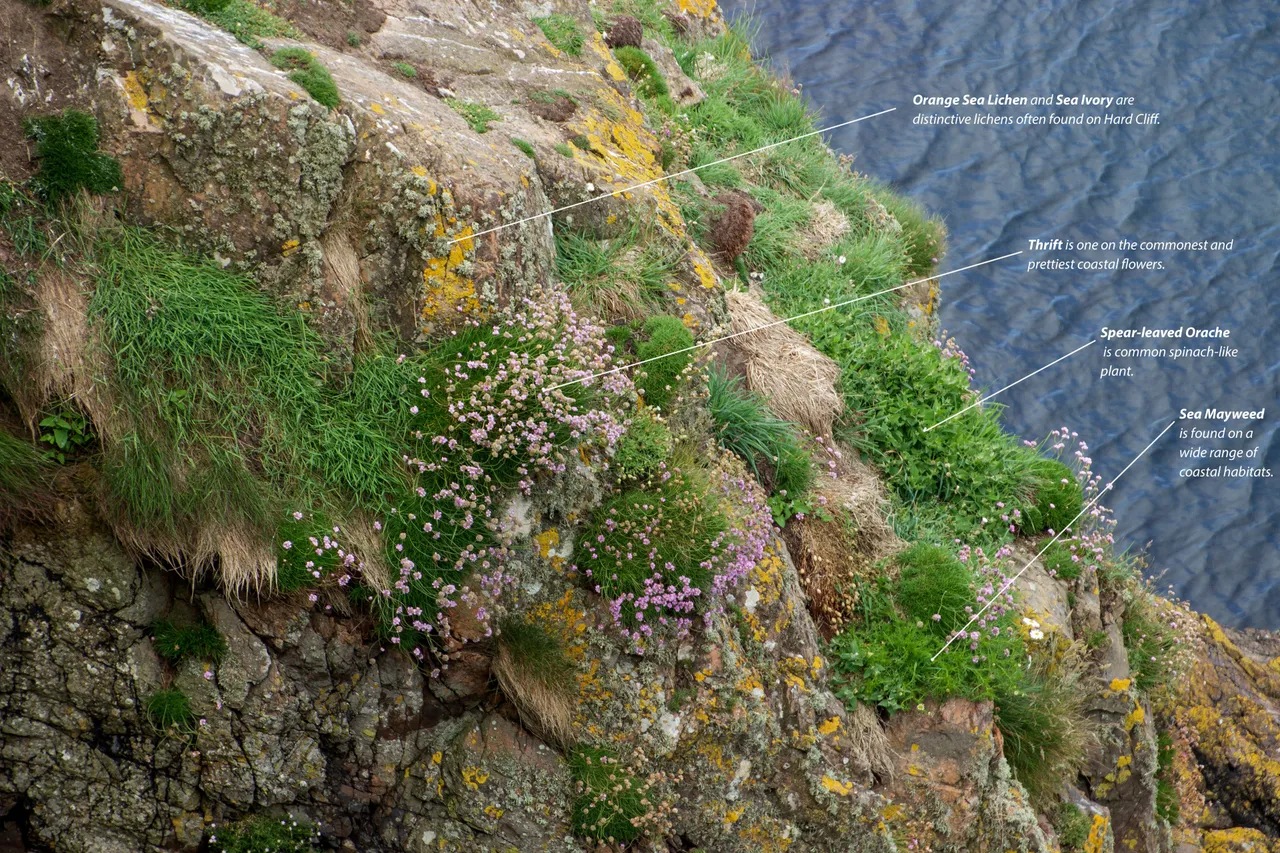

Above: Thrift
